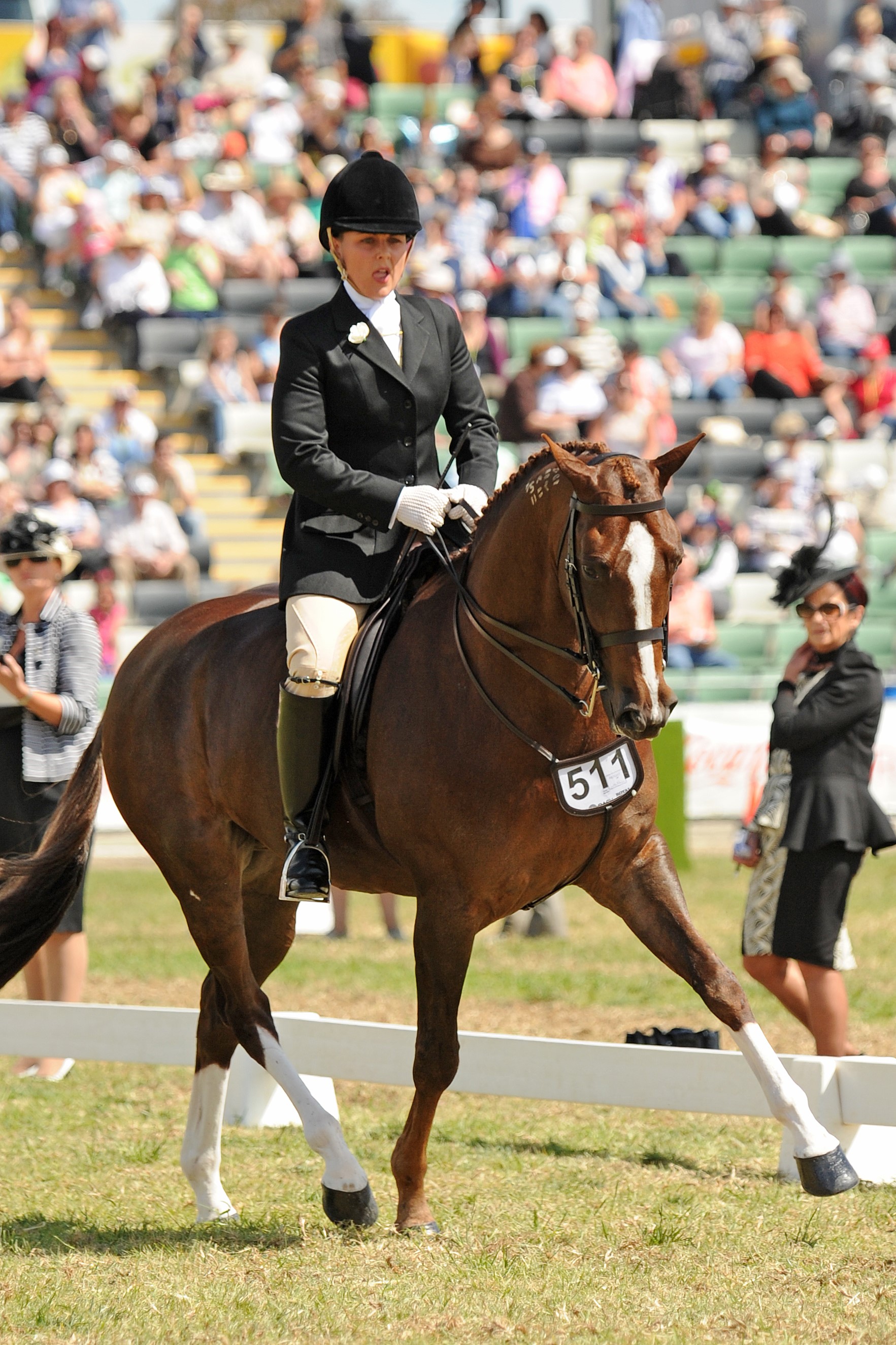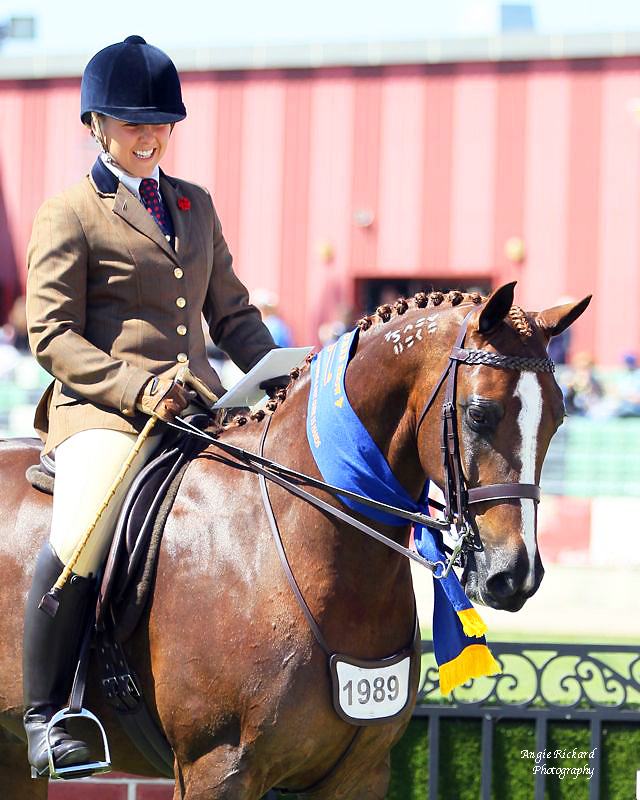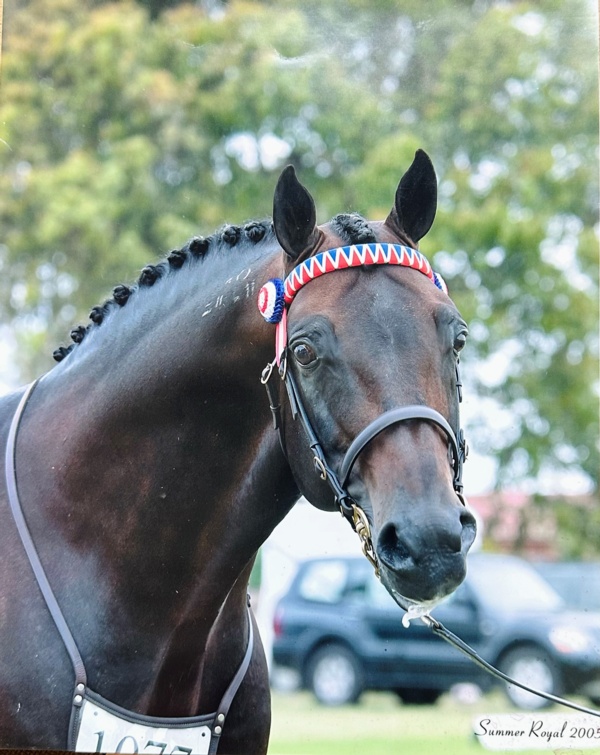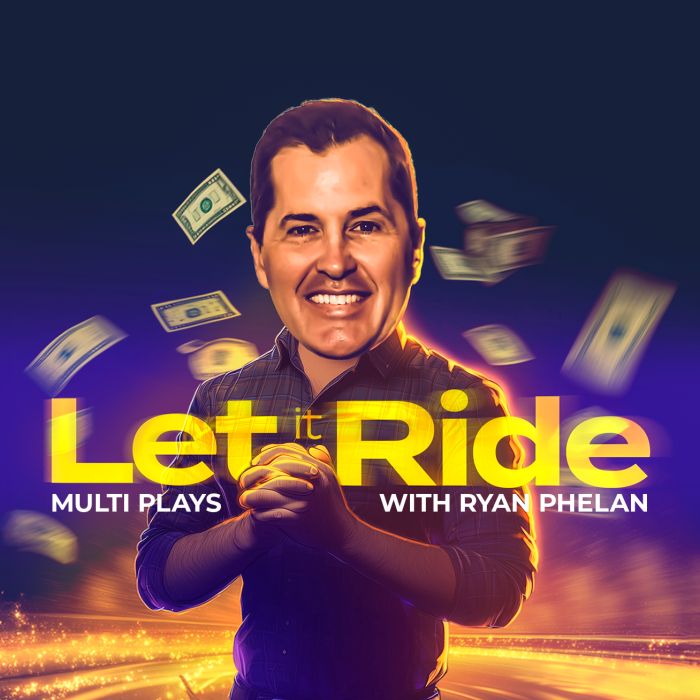
Never far from the paddocks, Kathleen and her sister showed an early interest in horses and assisted their father with day-to-day stable duties and trips to the races.
“I get this call from Dad asking me if I remembered the horse we’d seen at the Kilmore trots a while back. I said ‘vaguely’, only to be told that was good because he was on the float and on his way home”, says Kathleen with a laugh.
“All I kept thinking was ‘what on earth do I want with an aged, entire ex-pacer?’ I thought Dad had lost his mind, right until the horse stepped off the float. He was just magnificent, with huge jersey cow eyes that looked right into your soul.
“I turned to Dad and said ‘alright, let’s give him a go’. I didn’t realise at the time that bringing Tom home would be the start of a remarkable journey”.
Kathleen and Tom, who was shown as ‘Titan Thunder’, went on to contest some of Australia’s most prestigious awards in both the standardbred ring and open classes, taking home Supreme titles in three states (Victoria, New South Wales and South Australia).
A highlight of their partnership was winning the Melbourne Summer Royal Open Breed Stallion twice and going on to make the Top % Best of Show award at the 2011 Melbourne Summer Royal.
A friend to Tom in his later years was MF Hollywood; a horse who would go on to earn himself legendary status within the standardbred and open showing communities.

“You’d have your heart in your mouth watching him fast-work”, Kathleen recalls.
“He had a huge stride, but was super awkward, like a spider on roller-skates. James had about three or four starts as a pacer and was hopeless. I think we figured out that during those few races, he was beaten by nearly four hundred metres collectively!
“In cart, James cornered like a motorbike. I suggested to Dad that we break him to saddle to teach him to use his body and steer properly. We thought this might help him to improve his coordination and balance”.
It didn’t take long for James to excel in his ridden training and for Danny to lose his racehorse.
Their stellar performance in the 2013 Garryowen Equestrienne Turnout competition was the catalyst for James and Kathleen’s showing career to soar to new heights.
The following season, James returned to the Main Arena at the Melbourne Royal Show to claim the Novice Hunter Galloway prize in an immensely competitive field of the best show horses of this height range in the country.
Receiving this accolade in the open show ring in a way legitimised James’ status as a standout competitor in his own right, rather than simply being recognised for being ‘The Standardbred’.
As the intensity of a sustained, multi-year showing campaign wound down, Kathleen took on a new role at Harness Racing Australia (HRA), as the Equine Health and Welfare Coordinator.
Through her work at HRA, Kathleen has developed several key standardbred welfare initiatives, to enhance traceability, legislation and education.
One of these programs was the There Is No Finish Line project, which saw the creation of a website and social channels to provide easy-to-digest information to the non-racing public about the efforts the harness racing industry is taking to safeguard its horses and participants.
As part of There Is No Finish line, it was suggested that Kathleen should take on another standardbred to showcase the retraining process as part of an educational initiative.
“I went to visit Paul Rowse, harness racing trainer and CEO of the Ballarat and District Trotting Club, very early on to see a particular horse he thought might be suitable”, Kathleen explains.
“The horse didn’t really suit, but whilst I was there Paul offered to show me around. A big, arrogant black horse came over to the gate and glared at me as if to say ‘who are you and what do you think you’re doing here?’ I liked him immediately and Paul explained he was also retired from racing, but he had some age on him. He had completed over one hundred starts as a pacer and had won over $200,000 in earnings”.
“Buck (who raced as Savesomtimetodream) didn’t look like a show horse by any means, as he had this woolly winter coat which was so thick and plush it was almost velvety. But, he trotted with his chest puffed out and proved himself to have a pretty excellent attitude to everything we asked of him. I thought, ‘we’ve got something here’ and decided to take him on”.
Buck’s straightforward, intelligent nature made him breeze through retraining, which was documented in a video series for the There Is No Finish Line project.
He went out and won a few classes at agricultural shows, including being sashed Champion Open Hunter Hack and Open Champion in his height classes at some well-attended events.
The goal was to use Buck’s retraining journey to show people that even older, seasoned racehorses could successfully transition to ridden training.
“I think the really cool thing is that Buck, James and Tom’s journeys were so different. Tom was an aged stallion, James had such limited training in cart and was super sensitive when he began his ridden training and Buck had such a huge career as a pacer and then just slid into ridden life without missing a beat.
“I think it just proves that is doesn’t matter how old, experienced, or how much a standardbred won on the track, give them time and the right tools and they can be massively successful”.
With many standardbreds continuing to break stigmas and showcase their talents and versatility in performance arenas, Kathleen feels a sense of pride when reflecting on how far the breed has come.
“In my role for HRA, I’ve seen some huge changes relating to high-level regulation, rules, traceability and welfare practices. These have been utterly embraced by harness racing industry participants”, Kathleen explains.
“On the other hand, standardbreds as a breed have also come along in leaps and bounds, in terms of favourability as riding horses. They’re being recognised for how smart and versatile they are and there are many standies out there doing some really cool things under saddle.
“The industry, and our breed on the whole, has come very far in a relatively short period of time and this is something I think everyone involved should be proud of”.
Excerpt taken from a feature story published in the HRV Hero Newsroom. Read the full article here:






